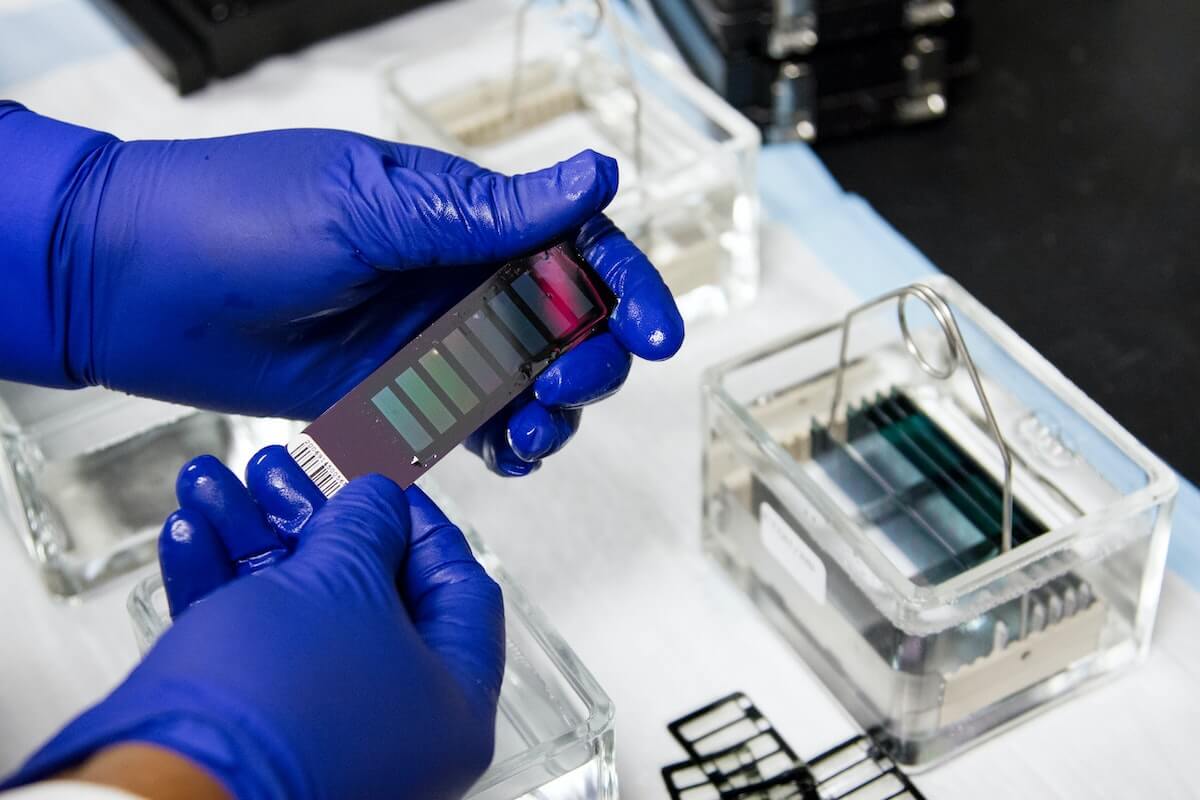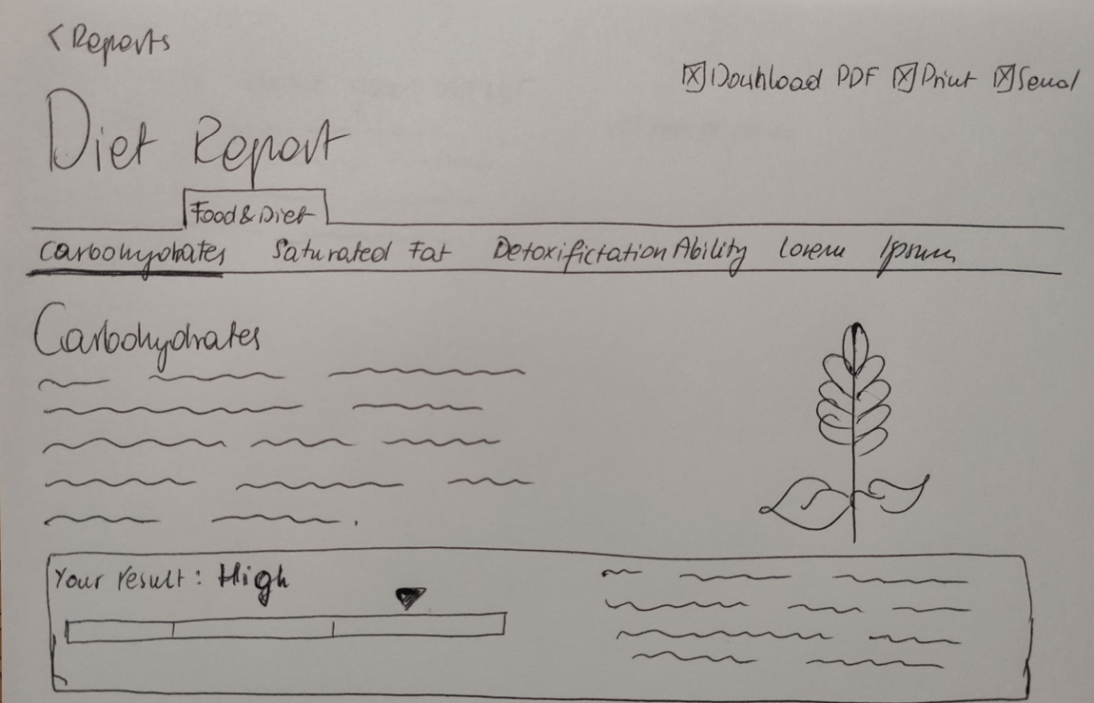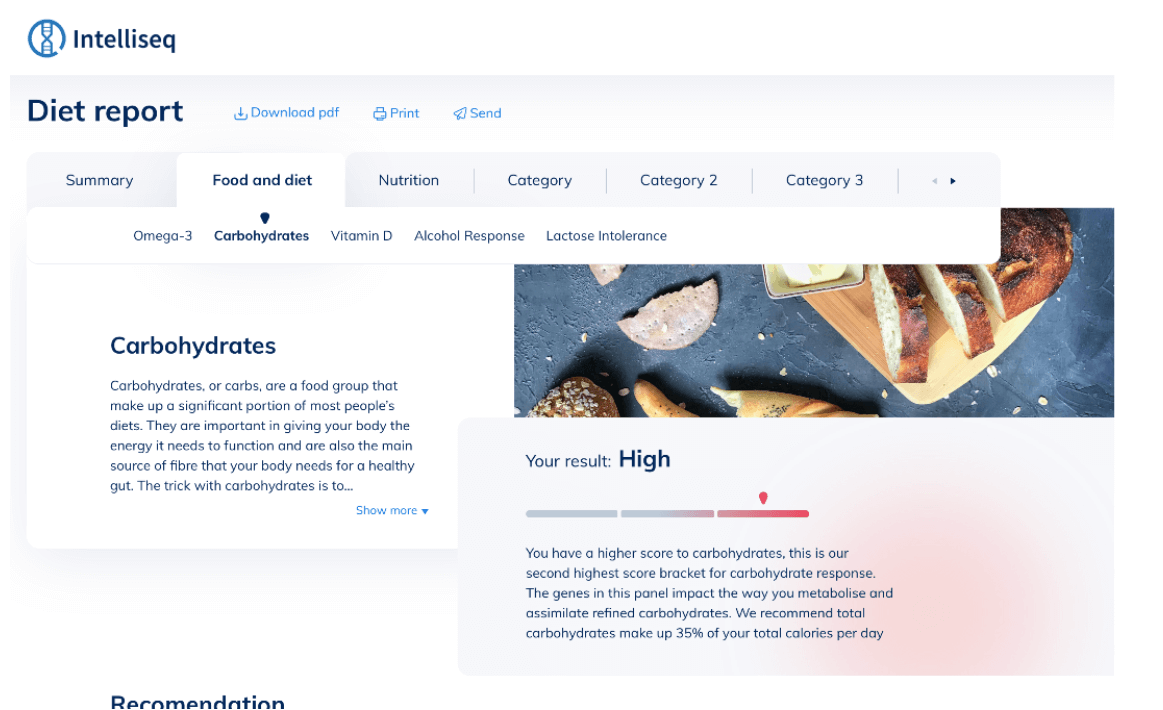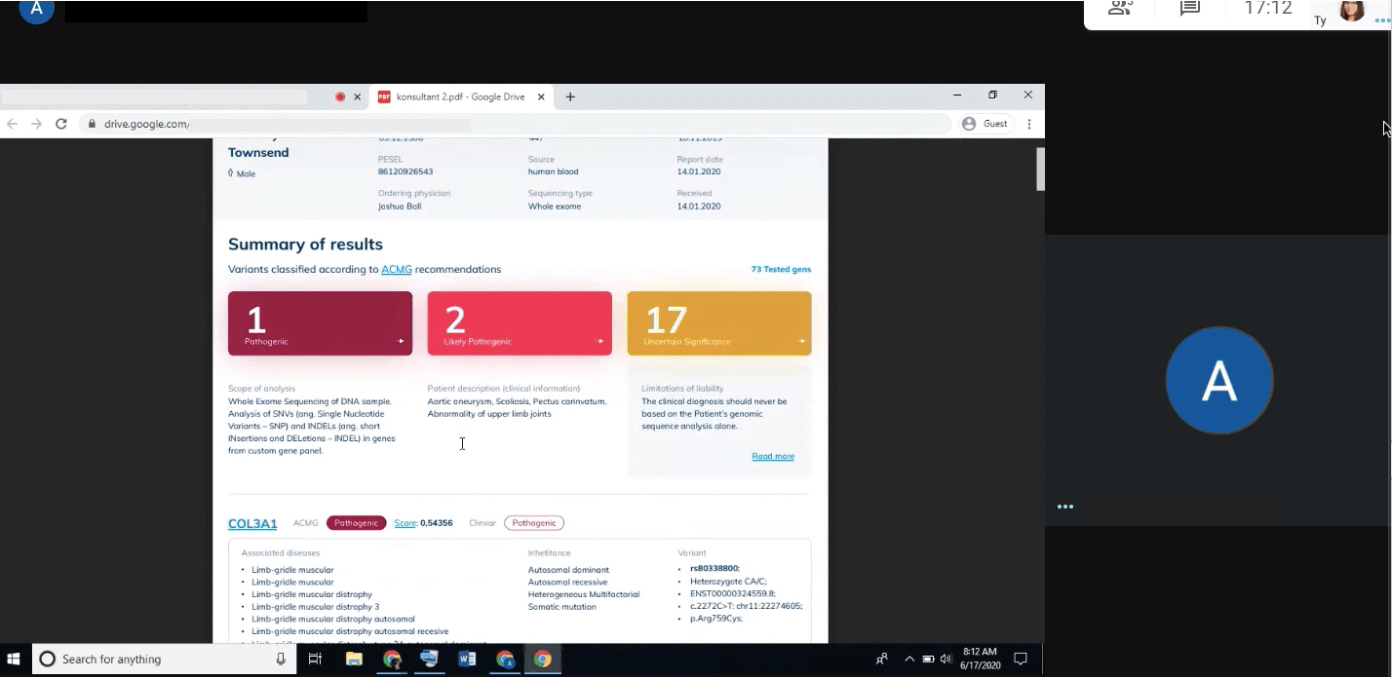Well-designed reports presenting DNA results optimise the work of genetic consultants and help patients understand test results. How did we approach such a difficult topic when working with Intelliseq?
Genetics enthusiasts closer to the user
Intelliseq is a biotech company operating since 2014, founded by experts in the fields of genetics, molecular biology, and computational genomics. It develops bioinformatics solutions for DNA analysis and interpretation, both in the context of diagnostic and commercial research. In 2017, Intelliseq partnered with US-based Helix (owner of the world’s first genetic data distribution platform) and developed its own consumer genetics application. In 2018, Intelliseq began cooperation with SoftSystem, a company that develops software for use in medical diagnostics. As part of the collaboration, the genome analysis system is planned to be implemented and sold on the international market.
Intelliseq bases its business on the commercialisation of the results of original research and development projects co-financed by European funds. At the moment the company is in the process of commercialising one of the projects (GeneTraps – a system for analysing the results of genome sequencing dedicated to precision medicine) and is working on two others (MOBIGEN – an innovative technology for creating mobile applications for consumer genetics; PGx Plus – a system for pharmacological interpretation of the genome).
Project background
Genetic testing is becoming increasingly popular. In the United States, it is most common to test one’s ancestry, but tests that check for the genetic markers of certain diseases or genetic predisposition to certain traits, such as food intolerance, are also becoming more common. It is still a great challenge, however, to present such difficult medical data in an accessible form.
What were the goals of the project?
The goal that was set for us was to redesign the DNA test result reports and make it easy to read and understand by a person without a medical background. Eventually, Intelliseq will offer its customers three types of reports:
- “Clinical” – dedicated to medical specialists (doctors, genetic analysts, genetic consultants); ordered to diagnose genetic diseases in patients with specific symptoms;
- Consumer “Health” – dedicated to customers who are not medical specialists, who want to check their genetic predisposition to various diseases and on this basis determine a plan of preventive actions;
- Consumer “Wellness” – dedicated to customers who are not medical professionals, who want to check their genetic predisposition to various traits, such as levels of certain vitamins, metabolism, and on this basis shape their diet or activity.
The three types of reports represent three different target groups, so there are also considerable differences in expectations as to how the data should be presented. The assumption was that the Health and Wellness consumer reports would be friendly and understandable for clients who do not have specialist knowledge in the field of genetics, and the Clinical report – to facilitate the analysis of the result for genetic consultants.
How did we approach this?
Exploratory remote testing

The product is targeted mainly at the US market. We wanted our designs to be in line with the users’ needs. That is why we decided to conduct exploratory research remotely, with users in the USA. The respondents were to be genetic consultants and individual clients who had already done DNA testing and would be able to tell us about their experiences with the reports and their reception of the information found there.
Challenging recruitment
Recruiting such a specific group of respondents overseas was quite a challenge. And it is not just logistics related to time zones, as we have research and project experience in various parts of the world. The cost of engaging recruiters is very high, lead times can be quite long, and the databases where respondents can be found do not necessarily allow us to find such a narrowly defined group. In the end, in cooperation with Intelliseq, we found both genetic consultants, as well as individuals who have taken part in genetic testing in the past.
What did we study?
Clinical Reports
At this stage, we wanted to find out primarily how professionals work with reports and what a patient consultation looks like in the US, from their perspective.
Health And Wellness Reports
During the interviews, we asked about reactions to reports received and concerns about DNA test results. Additionally, during the interviews, we showed examples of commercially available reports and graphics that we collected in a benchmark prior to the study. We wanted to check which way of presenting specific data would be the most optimal for our target groups.
PDF for consultants, a website for consumers
During the research we learned a lot about the realities of consultants’ work in the US – it turned out that gathering the most important results at the beginning of the report and the possibility to print the data are important to them. Most often they use PDF, so the report should be in this format. Consumers who analyse reports on their own prefer interactive reports.
Design concept of the report
This stage belonged to UX and visual designers. It was clear from the beginning that UX and UI designers would work closely together, as the graphical layer had a very significant impact on the perception of information. In Clinical Reports, genetic consultants are presented with a great deal of data that must be readable and properly organised for them. In Consumer Reports, on the other hand, accessible, understandable messaging and content is the critical factor.

Based on the knowledge gained during the research, workshops, and benchmarking, we started the design from paper prototypes which, after intensive consultations, were continuously visually designed by our UI Designer. We decided to present the data by treating it similarly to image product pages.


Concept validation
During this phase of research, we wanted to check the reactions of users to the graphic concept we adopted. We went back to the people we talked to during the exploratory research and showed them the first few subpages and segments. The direction turned out to be right. An additional interesting aspect of this part of the project was the reactions of the respondents to the possibility of participating in the process of designing reports and looking at the effects of previous conversations.
Report development and usability testing
After the validation research, there was an intensive time of working on the reports designs, in case of consumer tests also on the mobile version of the materials. We constantly cooperated with the client, who provided us with indispensable support.

The reports were then tested in a series of usability tests. We invited respondents who hadn’t had a chance to see the concept yet, and we checked how users deal with navigating the reports designed by us. After receiving the feedback, we have implemented the recommendations based on the observations from user study.
How does Intelliseq sum up the cooperation with us?
“I’m glad that we were able to carry out UX research of genetic testing reports with Edisonda – excellent work organisation and professional approach to research. Previously in Intelliseq, we were focusing mainly on technical aspects of the reports. Thanks to Edisonda we know how to communicate the results to patients, doctors, and genetic consultants. We have gained a user’s perspective – an invaluable experience!” – comments Dr Klaudia Szklarczyk-Smolana, Business Development Director at Intelliseq sp. z o.o.
Methods and tools applied:
During the project we have used several different tools and methods to achieve high quality of the final designs.
- Remote exploratory research with a hard-to-reach group of respondents in the US
- Individual in-depth interviews with graphical surveys
- Workshops with the Intelliseq core team
- Benchmark of medical reports
- Paper functional prototypes
- Visual concept
- Validation of concept in the form of interviews
- Task-based usability testing
Selected UX and UI solutions
- Strong emphasis on visual preference research and visual concept testing
- Use of user-friendly solutions known from product image pages
- Adapting the design of three different types of reports to the specific expectations of three target groups
- Design adapted to web-desktop, web-mobile, and interactive .pdf formats with printing option
- Summary of key findings at the beginning of the report in an intuitive synopsis



